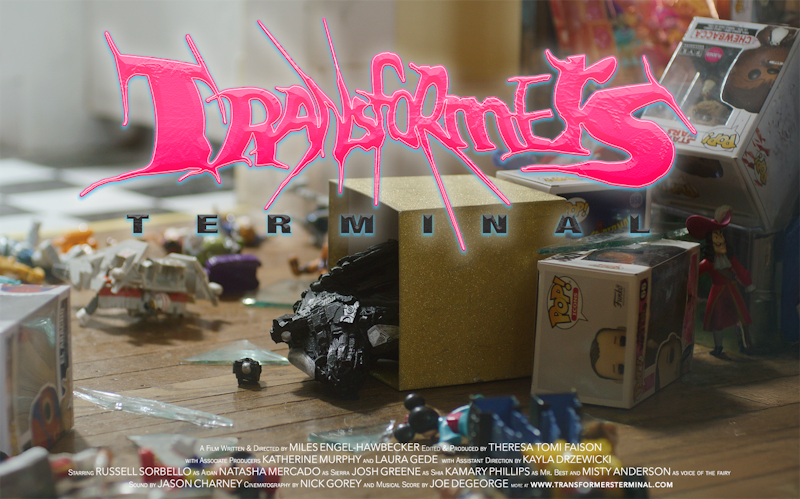Everyone packed into the rotunda. The crowd spilled in from the rainy spring street into the historic entryway of the Senator Theater, waiting for the big doors to open. People from all stripes of Baltimore’s film world were there: directors, producers, below-the-line crewmen, movie theater employees, bartenders and their ilk: it’s a movie premiere, at least a local one.
In Baltimore, every locally-made movie is from someone that you know. I found out about Transformers Terminal from Katherine Murphy, the film’s associate producer and a Splice Today editor. But walking into the Senator, it feels like everyone you know is there, and spilling back outside after is the energy of a vibrant film there—there’s more people ready to make their next movie having a cigarette outside than there are passive theater-goers. We live in a town of broke artists, and it’s appropriate that the film’s principle movers, producer/editor Theresa Tomi Faison and writer/director Miles Engel-Hawbecker are ex-Senator employees themselves.
Transformers Terminal is a film about the divide between the online experience and our “real” lives. It follows a fanboy, Aidan (Russell Sorbello), moving in with a streamer e-girl, Sierra (Natasha Mercado), and their inability to communicate past the comfort of their online mediums. When they finally meet in person, there’s unyielding tension between their physical persons, broken only by them connecting once again through their laptops while sitting only feet from each other. They’re as stunted by their Discord-driven, hyper-online personae as they’re liberated from their suffocatingly ordinary lives with the comfort of branded signifiers and the confidence of fan-speak. Their curated obsessions give them a secret language with which to handshake with.
And as the online-ness of their interests drives the characters together, it also drives the form of the filmmaking—scenes will often pull back to picture-in-picture or juxtaposed screens to represent the experience of interfacing with digital devices. Most interestingly, as the credits roll, the online scroll is represented on one side of the screen while it’s reflected across the glasses of the spectator in the other corner. Baked into Transformers Terminal is a viewing of itself, a look from outside the object, a peeling back from the objects that addictively govern our lives in 2025. It’s a film that presents itself as heartfelt before revealing the terrible reality that lies under its surface.
Making this work with a surprising genre bend like this is a miracle in and of itself. There’s a lot of fake blood, sweat equity, and real tears that need to be shed in order to get the thing from an idea rattling between a couple people’s heads to a collage of light that hundreds of people sit down to see in a historic picture house. Regardless of what the movie is, the community is going to turn out for something birthed from itself like that. Or maybe that’s its first test. The real test is where it goes from there.
Transformers Terminal sold out its premiere at Anthology Film Archives the Tuesday before its Baltimore showing on Sunday. The film will continue on a direct-to-audience release, circumventing the conventional festival run and instead touring the picture as an event (it’s cutely coincidental that in the Senator’s foyer, their Revival calendar was advertising a showing of Hundreds of Beavers, a film that became the example par excellence of this increasingly popular release method last year). It’ll be interesting to see how far the film can take itself on the road, and if it can sustain its growing momentum from here.

